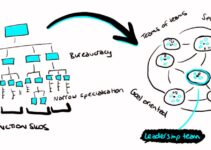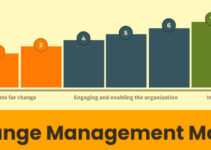Company culture transformation plays a critical role in the overall functioning and operations. In order to improve productivity and boost employee satisfaction levels, implementing culture change in the workplace is necessary. The productivity is higher approximately 50% of those employees who feel value than those who do not. Today, we’ll discuss cultural transformation in the workplace; its definition; the benefits of company culture transformation; and implementing culture change in the workplace.
What is Cultural Transformation in the Workplace?
Cultural transformation in the workplace is the method of shifting and evolving a company’s culture relevant to its values, beliefs, mission, and vision statement. Company culture transformation requires you to critically analyze your workplace and implement changes to shape behavior, processes, commitment, and policies.
In order to successfully launch cultural transformation in the workplace, it is significant that your workforce is familiar with the company’s values; differentiating factors from other organizations; and growing in the workplace environment.
Changing culture would change the perception and thinking process of your employees in terms of how they deliver products and services to the customers. Every interaction of customers with your company’s representatives should reflect the cultural values from the beginning to the closing of the transformation.
How to Implement Cultural Transformation in the Workplace
Implementing culture change in the workplace plays a key role in the growth and productivity of an organization. Some of the main steps on how to implement cultural transformation in the workplace are as follows;
Recognizing Issues in Existing Culture
It is significant to be aware of the cultural problems and issues that the company is facing and the employees view them, before launching transformation. Often, the project of culture change beings from the top management and moves down to the bottom without receiving any type of input from the employees.
The perception of cultural challenges and issues is different from top management to the lower level of employees. They both think differently in terms of challenges and issues that the workplace is dealing with. You can beware of the challenges that the company is facing;
- Executive meeting that has the capacity to impact workplace culture
- Meeting with team leaders and top players
- Focus group meeting
- Employees surveys
Informing Management and involving them
Many research studies have shown that the support, commitment, and dedication of leaders play a key role in transforming the culture. The leadership of the company plays a key role in transforming culture and their faith and investment in the process would define the success of the change. If leadership has doubts and concerns that the changes require execution; then they aren’t alone in this consideration. Approximately 12% of the companies that have gone through cultural changes have achieved what they were expecting and hoping for.
- The company’s leadership focuses on following questions;
- Type of behavior that they should remove
- Common new behavior
- New behavior that needs embedding for changing culture
- Comparing existing behavior with the desired behavior to visualize the new culture that you want
Developing Strategic Plan
It is significant to develop a strategic plan that you could put into action based on the changes that you want in the workplace. Your focus should be on the strengths of the current culture, and removing the small weaknesses. It requires you to write down desired goals and objectives that you plan to achieve without going overboard. Your goals and objectives should be clear, easily measurable, and achievable.
- Recruiting leaders who want to promote new behaviors and manage changes
- The company’s culture should be relevant and consistent with the desired behavior
- Deployment and staffing correctly to make sure employees have the skills to manage changes
- Improving the competency of employees to launch new changes
- Rewarding and compensating for new behavior
- Systematic communication that would promote group-level changes to the new behavior
Connecting & Communicating with Workers
It is significant to receive the feedback of employees while transforming the culture. You should recognize and connect with employees and workers who are making progress. According to an estimate, engaging and connecting with employees would turn out to be more productive roundabout 21%. The productivity would resultantly impact the bottom line and the company’s profitability.
Company’s Hiring Process
It is significant to recruit such team members and employees who share the same vision as you do of transforming the culture. It is difficult and tricky to select the right candidate that is culturally fit and that’s why they employ technological tools to ensure that they tick the right boxes. However, they conduct cultural analysis tests to analyze the cultural preferences of the candidates. It analyzes their core values and beliefs to ensure that they’re the right fit for the company’s culture.
Evaluation Performance
It is significant to analyze your performance to make sure whether culture change is working or not. You should measure and analyze every area of the culture change, just the new strategic campaign that you are implementing. However, some of the key areas that the company’s management should measure are as follows;
- Overall new behavior whether they are embracing changes or not
- Tracking business performance to know how it has changed
- Realistic expectations that you planned to achieve
- Feelings towards the change in culture
Patiently Wait for Transformation
Cultural change is a continuous process and it won’t happen overnight. Instead of building and setting up a change strategy by yourself, you should include everyone in the process to get their feedback and reviews. Tracking performance would help you to know whether your changes are working or not.
Benefits of Company Culture Transformation
Some of the main benefits of company cultural transformation in the workplace are as follows;
Improved Customer Service
You can achieve cultural transformation both at the micro and macro levels. Almost every team deals with internal and external clients, and their focus is to pursue better and improved customer service to meet their demands and requirements.
Innovation & Creativity
The global business competitive environment and changing trends are compelling businesses and companies to develop a strategic plan to gain a competitive edge. Transforming a culture that fosters experimentation, risk-taking, and creativity would guide you to develop problem-solving skills innovation, and creativity.
Satisfied Workforce
A top-performing organization would generate trust and confidence level of customers. Focusing on building trust during the culture transformation phase and integrating with it; allows you to promote collaboration and a sense of community among employees. It results in the form of the developing collective problem-solving skills; and efficient and effective teamwork.
Efficiency & Productivity
When the goals and objectives of the company are in alignment with its cultures; activities and strategies would start delivering results. Employees should comprehend how the company is working and the significance of the work they do. As a result, they find purpose in their work and comprehend the value of their role in the workplace. It pushes them to perform better and deliver quality results.
Lower Risk
Company culture transformation is a continuous process periodically, rather than implementing changes at the mass scale. It allows you to recognize and detect issues and address them on time before they become big and pose a bigger threat to the entire organization.
Conclusion: Company Cultural Transformation in the Workplace |Implementing Culture Change
After an in-depth study of the cultural transformation in the workplace; we have realized that company culture transformation in the workplace is beneficial for growth and productivity. If you are learning about implementing culture change in the workplace, then you should keep in mind the abovementioned benefits, definitions, and processes.
Ahsan is an accomplished researcher and has a deep insight in worldly life affairs. He goes Live 3 days a week on various social media platforms. Other than research writing, he’s a very interesting person.


